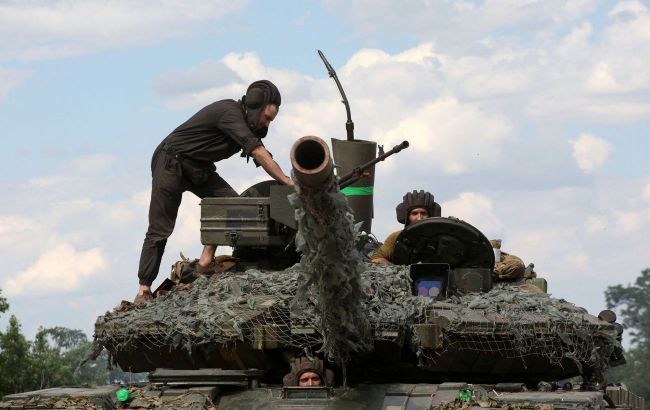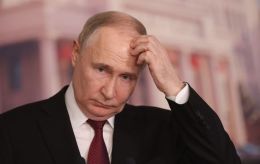Ukrainian forces advance towards Bakhmut amidst counteroffensive
 Ukrainian troops try to encircle Russians in Bakhmut (Getty Images)
Ukrainian troops try to encircle Russians in Bakhmut (Getty Images)
As Ukrainian troops move closer to Bakhmut, they encounter challenges in their southern counteroffensive. A military expert and reserve major of the Armed Forces, Oleksii Hetman, provided insights on the ongoing developments and the potential breakthroughs in the frontline.
Considering the massive deployment of Russian forces in the Lyman-Kupiansk direction, estimated at around 130,000 troops, over 2,000 heavy pieces of equipment, and more than 800 artillery units, they might be contemplating an advance towards Izium and even Sloviansk. However, these offensive operations seem to serve the purpose of diversion to distract Ukrainian forces from the south and Bakhmut.
This strategy can be described as an active defense, where troops defend while simultaneously launching counteroffensives in some areas to distract and slow down the enemy.
Can we successfully hold back the Russians? We have been maintaining our defense for several months, and they attempted a major offensive earlier this year, which failed. In just a month of our counteroffensive, we managed to liberate more territory than they captured.
Regarding Bakhmut, our approach is clear – we will not engage in direct frontal attacks on the city, as that would result in heavy casualties. When the Wagner militants occupied the city, they left one body on the ground for every 42 centimeters of land. One could say they paved the city with their own dead.
Our strategy is to encircle them from the north and south. The area around Bakhmut has strategic heights that need to be secured for full control of the battlefield. The city itself is situated in a low-lying area, and our forces have a clear view of everything happening there. The military command refers to this situation as the "Bakhmut Trap." Once we secure the heights, consolidate our positions, and bring in heavy equipment, the Russians will be left with three options: retreat, surrender, or be destroyed.
Currently, we are gradually pushing them back from positions north of Bakhmut, and there's a possibility of opening a way to Soledar. It would be a significant blow to the Russian forces if we manage to liberate that area.
On the Berdiansk and Melitopol directions, progress is challenging due to the "Surovikin Line" (a vast network of fortified positions designed to impede the Ukrainian forces - ed.). Despite a supposed landing on the left bank of the Dnipro, across from Kherson, the Russians face a dilemma – whether to redirect troops to Kherson or keep them in the Zaporizhzhia region.
There won't be a breakthrough until we neutralize them, significantly reducing the intensity of their artillery fire. As of now, we've slightly slowed down our advance due to mined fields and heavy enemy fire, but it's far from being called a catastrophe. We are currently targeting Russian logistics, depots, infrastructure, and artillery.
In a month of counteroffensive, we've identified both weak and strong points of the enemy. We had to understand how they would respond to our actions. Now, we can see that their main focus was heavily mining approaches to their positions. This is what we have to deal with.
Many Western analysts suggest that if NATO's army faced a similar situation, they would resort to carpet bombing the minefields and frontline. B-52s would have taken care of it all. Unfortunately, we lack such capabilities, which is disheartening, but we have to work with what we have today.
Oleksii Hetman, for RBC-Ukraine

